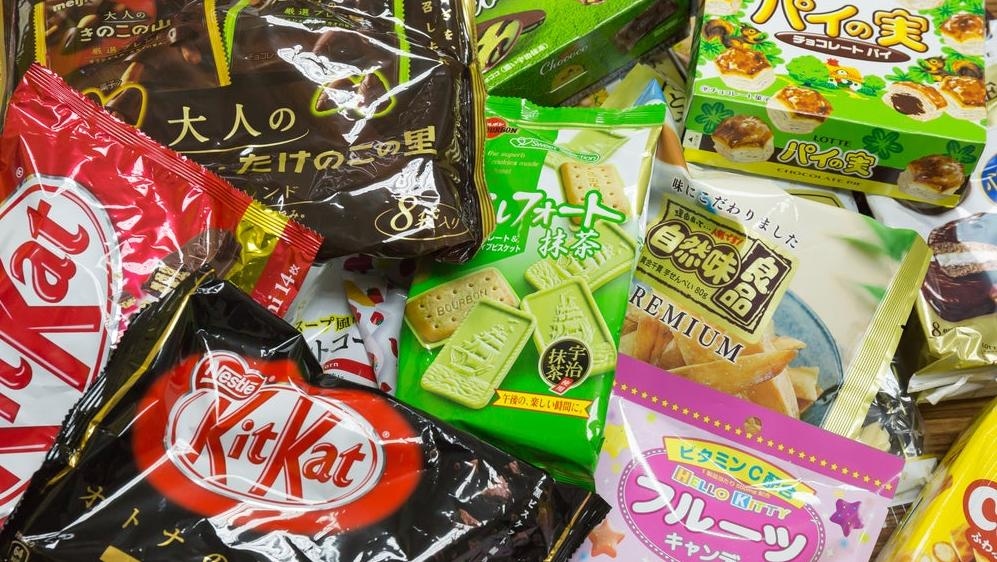Japanese Candy Is America's Future
Why Japanese snacks have captivated the American palate.
If you, like me, spent the dawn of the 2000s nursing an insatiable hunger for any snack product with a single letter of katakana (one of the three Japanese writing systems) printed on the bag, then you know the search required a trek to a Japanese or Asian grocery store like Sunrise Mart or Mitsuwa Marketplace. This journey, much like watching anime and reading manga, felt like a delicious celebration of my own nerdiness.
These days, however, Japanese snacks are now standard fare in the United States, and long gone are the days when a fascination with everything Japanese was regarded as strictly the domain of nerds and so-called otaku. The rise of foodie culture has collided with a burgeoning love of all things Japanese, as food personalities like David Chang and Anthony Bourdain have celebrated the work of Japanese chefs and helped usher the cuisine into the North American mainstream.
"It's actually kind of cool to like Japanese things [now]," said Danny Taing, founder of Japanese snack subscription service Bokksu.
It probably doesn't hurt that we're all obsessed with Japanese Kit Kats now, and that Japanese snack brands like Pocky, Hello Panda, and Hi-Chew have been available in American grocery stores and retail chains for years now. Pocky in particular first hit the shelves of the supermarket chain Stop & Shop as far back as 2011, a representative for Stop & Shop confirmed. And Teruhiro Kawabe, president and CEO or Morinaga America, tells The Takeout that Morinaga's popular Hi-Chew candy has been available in stores like CVS and Walgreens since 2015.
Customers want more Japanese flavors
For many customers, the rise of Pocky and Hi-Chew has sparked an interest in sampling more Japanese candy and snacks.
"There was a time when people would ask questions like 'what's yuzu?' or 'what's matcha?'" said Takuya Yoshida, who along with his father, Tony, co-owns Japan Village, a Japanese market and food court in Sunset Park, Brooklyn. That was around the early 2010s, he recalled. Now, Yoshida said, "most people already know what [those are]."
In a 2021 Bon Appetit article about Bokksu, MacKenzie Chung Fegan styled herself as a "sophisticated Japanese snacker" whose tastes had advanced beyond Pocky and Kasugai gummies—products that still hold a place in her heart, she added. This is precisely the demographic of snackers that flock to a service like Bokksu.
"Generally speaking, the Bokksu customer is somebody who's kind of an advanced beginner, so to speak, about Japanese culture," explained Taing. "They've either studied it or have gone there or they've tasted it before, and they want to go deeper."
Taing sees it as a kind of trickle-down effect, he said. While the rising popularity of Japanese food and culture in the States isn't exactly news, the increasing ubiquity of mass-produced snacks like Pocky has helped lay the foundation for a more nuanced appreciation of Japanese flavors.
"The first exposure is really important," Taing explained. That exposure could come from eating Japanese food in a restaurant or from "trying a mass-produced snack that they can easily access from an H-Mart on Long Island," for example.
Non-Japanese cultural exports have helped introduce Japanese food and snacks to the masses, too.
"Even the rise of K-Pop has helped," explained Taing. "They learn about K-Pop and Korean food and culture and fashion, and now they're curious about other types of Asian things."
Those consumers often begin to seek out the types of specialty products offered by Bokksu. These range from senbei (rice crackers) produced by Senbei Lab in Saitama Prefecture to handmade sweets in flavors like Yuzu Sake and Sakura from Kyoto-based candy shop Daimonji Ame Honpo. Bokksu's snack makers are all independent, and often family-owned, companies.
Where to buy Japanese candy and snacks
In a country as large as the US, where access to Japanese grocery stores and restaurants is largely concentrated in places like New York, Seattle, and Los Angeles—places with sizable Asian populations—it's nice to know that a suburb-dwelling kid with a fierce desire to experience Japan through its snack food can now easily order these snacks online via sites like Umamicart and napaJapan. If you're lucky enough to live near a Mitsuwa, you can check out events like the annual Hokkaido fair for specially imported snacks from different regions of Japan.
Bokksu's products aren't otherwise available for sale in the US, Taing explained. It took Taing years to develop partnerships with his makers in Japan, an approach that few US companies would be able to replicate. However, while we may not be able to buy uni-flavored senbei anywhere other than Bokksu at the moment, perhaps much of the appeal of rare or hard-to-find Japanese treats is in the fact that you might just have to visit Japan to taste them.
